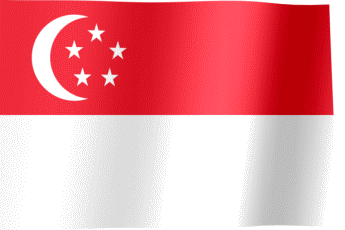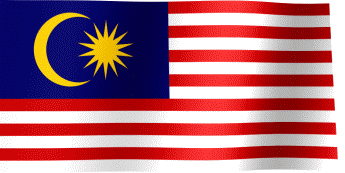
Singapore
Singapore is not known for diving, largely due to poor water visibility (caused by silt, from land reclamation activities). However, if you like muck diving (limited visibility) Singapore has a lot to offer. In the waters around Singapore, you can find Nudibranchs in large numbers, turtles, sea snakes, barracuda, frogfish, sea horses, and many more. If your lucky the local dolphins may visit you during your surface interval.
On of the southern islands, Pulau Hantu is a common destination for divers who are taking their open water, or photographers looking for macro subjects. The visibility can vary from 1m to up to 6+m (on rare occasions); the best time to dive is a slack tide or ebb tide (falling) as it helps to improve visibility. Seahorses are common here, as are pufferfish, barracuda, batfish, nudi’s, and the occasional turtle or shark.
Currently, Singapore’s first and only Marine Park; Sisters Island MP offers some great diving. Due to its location far south of Singapore it experiences a constant flow of nutrients from the ocean. This makes this a healthy dive site for the entire food chain. There are ‘Dive Trails’ setup to allow divers to follow set routes around the site to get the most from it. You`ll find nudi`s, giant clams, clownfish, and often blacktip sharks all in the vicinity.
A small island located East of Pulau Hantu, Jong is in quite an exposed location (near busy shipping lanes). But has good deep diving, and reef life; only suitable for the more experienced diver.

Malaysia
Malaysia offers some of the world’s Top 10 diving destinations, like Sipadan. Diving on the Malaysian peninsular is usually at the island located on the East coast. While diving in East Malaysia has a wide area with good dive sites.
Tioman island is the go-to dive destination for most divers in Singapore. Its an easy weekend trip (departing Friday night and returning Sunday night), there is a large number of dive sites around the island, some of the most popular are Ringgis, and Malang Rock. Common sightings around Tioman are reef sharks, turtles, dolphins, moray eels, clownfish, batfish and be careful of the Titan Triggerfish as they can be aggressive here!
Diving around Kota Kinabalu is very convenient, with Tunku Abdul Rahman Park islands a short boat ride from the Jesselton Jetty. You`ll find some areas full with Discover Scuba divers and snorkellers, but get a little further out away and the diving is good. The park consists of 5 islands, Gaya, Sapi, Manukan, Mamutik, and Sulug; diving is possible around all the islands. Turtles are commonly seen, clownfish, ghost pipefish, seahorses as well as the common reef fish.
Lahad Datu is a lesser-known diving destination in Sabah but offers some great diving. Largely untouched and undived, it has only grown in popularity over the last few years. Conditions are generally very good, with minimal current or waves; visibility is generally good at 6~7m or more. Things to see here are the occasional turtle, razorfish, pufferfish, giant grouper, and a few times a year whale sharks are spotted. There is only 1 dive operator in Lahad Datu, so you never see other dive boats making it a relaxing and peaceful diving destination.

Indonesia
The Indonesian islands are spread far across Southeast Asia and offer a variety of diving destinations. Less than an hour boat ride away is Bintan/Batam, while visibility can sometimes be on the low side it is a convenient getaway from Singapore. Bali is obviously another popular dive spot, with diving around Nusa Penida or Telumban.
Diving around Bintan/Batam is a nice alternative to Singapore; conditions are generally slightly better than Singapore. Most dive sites are shallow (less than 20m), and they are a mix of soft and hard corals.
Everyone knows Bali for diving, head down to the south and dive around Nusa Penida. Great diving there are places like Crystal Bay and Manta Point, currents are quite strong, visibility is good, but water can be cold around September time. Head to the east for Tulamben and the Liberty Wreck, generally less current.
Famous for its dragons, Komodo but it is an exotic destination to dive too. Corrects are generally strong, but has good visibility and great macro life.

Brunei
Brunei actually has a lot to offer for divers, conditions can vary depending on the time of the year. Brunei has many wrecks, some from wartime others from peace times. The diving is generally land-based by speedboat out to the dive sites.
A 90m steel wreck, that was sunk during WWII to stop it being taken by the invading Japanese; the wreck is at a depth of 22m to 34m.
American wreck is another WWI wreck, is the USS Salute an American Mine Sweeper. The wreck sits at 22m to 32m making it a good site for Explorer 30 or Advanced 35 divers. Visibility is usually better here than at Australian wreck, with up to 15m.
An unusual wreck, as its not a ship; the oil rig, was purposely sunk by the Brunei government. The rig is great for photographers as it forms a large artificial reef structure for many creatures, the site covers about 100 square meters.
The site is better suited to beginner divers (Open Water 20), it’s a shallow site, with good visibility and little current. Pelong forms part of a protected area, and has plenty of hard corals, making up the reef.